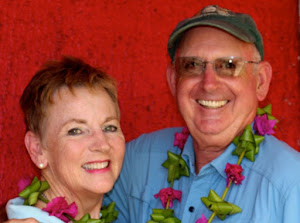Sleeper Cabin is a Euphemism for Sleepless Cabin
Our sleeper car on the night train to Chisinau, Moldova turned in to a sleepless cabin. I actually slept pretty well until a 2;30 am nature call. It went downhill from there. About 3:30 just as I was getting back to sleep, our car conductor, opened our door, turned on the overhead lights, and said that we would soon be boarded by Romanian Check Out officials. First officer was passport control. He peered at the passports, then us with our train tossed hair to see if we were a match, then thumbed through the double thick passports to find our Romanian entrance stamp so the he could place the exit stamp in close proximity. Next came the customs agent who wanted to make sure we were not smuggling cigarettes and art antiquities out of Romania.
Heads back on the pillow for 10 minutes while the train moved across no man's land between Romania and Moldova., then the process repeated itself, but this time it was check in with Moldovan Passport control and customs.
We were not in a cabin directly over train wheels, but other FF members were. They had an additional visitor The tracks in Romania and Moldova have not matched since the the communist era. Apparently the rails on one side or the other are thicker or thinner. Consequently, all the wheels on the train have to be changed upon arrival and departure between Romania and Moldova. No kidding! Look at the length of this train!
Each car on the train is jacked up and down, and moved back and forth, rumbling and grumbling and the wheels get changed. Those who have a cabin above the wheels gets an extra visit from the wheel men to make sure everything is ok.
Each car on the train is jacked up and down, and moved back and forth, rumbling and grumbling and the wheels get changed. Those who have a cabin above the wheels gets an extra visit from the wheel men to make sure everything is ok.
By 6:30 am, Russ and I gave up trying to sleep, got up, cleaned up, ate some protein bars, and I had some coffee. Like the Chinese and Russian trains, this train had a boiler full of water. I carry a thermos bottle and instant coffee, so I got my morning fix. Our train arrived at the Chisinau station around 9:00 am where we were warmly greeted by our Moldovan Friendship Force Hosts, and reunited with members of our Sacramento club who came a day earlier directly from the US. Our hosts arrived with flags, smiles, and fresh bread. The symbolic Moldovan welcome is offered and each guest partakes in bread dipped in salt.
Once we have accepted the welcome offering, we are partnered with our host. Our host is a single mom, Mariana and her 8 year old daughter Catalina. After a wonderfully sweet breakfast of Moldovan pastries and coffee at a nearby restaurant with our hosts, we have a short orientation meeting and our Moldovan Exchange coordinator explains the week's schedule to us. It is going to be a busy weeks starting with the Moldovan 25th anniversary making its Independence from the USSR.
Our host actually had to return to work, so one of the other host/coordinators drove us to our accommodations, where we spent the rest of the day catching up, sleeping, relaxing, and getting to know our host family.
Mariana and Catalina's cozy apartment is up 5 flights of steps. We will be able to work off all of the treats we have been eating. Mariana has fixed up her living room as our bedroom.
Our host actually had to return to work, so one of the other host/coordinators drove us to our accommodations, where we spent the rest of the day catching up, sleeping, relaxing, and getting to know our host family.
Mariana and Catalina's cozy apartment is up 5 flights of steps. We will be able to work off all of the treats we have been eating. Mariana has fixed up her living room as our bedroom.
Mariana cooks us a t nice meal, plinimene (similar to raviolis) with fresh cream.
After the evening meal, the four of us took a walk to see Catalina's school and then shared with our hosts some gifts that we brought from California.
After the evening meal, the four of us took a walk to see Catalina's school and then shared with our hosts some gifts that we brought from California.


















































